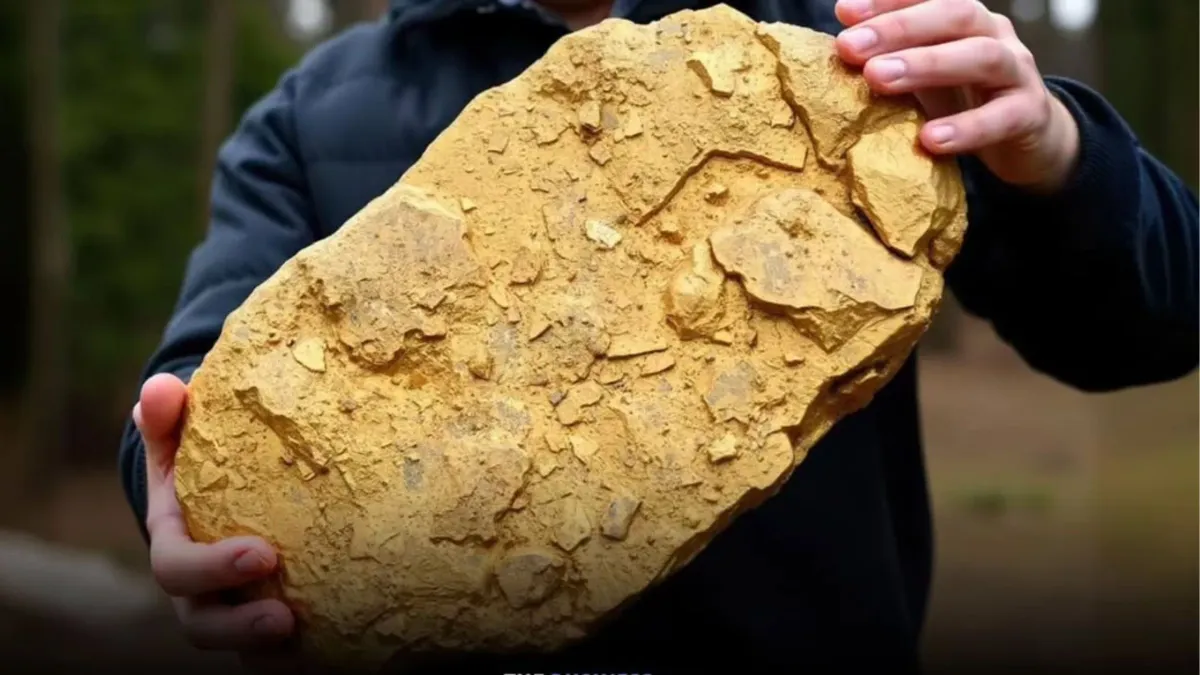From Gold Fever to Cosmic Wonder: The 4.6-Billion-Year-Old Maryborough Meteorite
In 2015, David Hole, an avid metal-detecting enthusiast, uncovered a mystery hidden beneath the soil in Maryborough Regional Park, Victoria, Australia. He discovered a peculiar reddish-brown rock that was extraordinarily heavy and unusually shaped.

Convinced it contained gold—a dream rooted in the region's gold rush legacy—David embarked on a relentless quest to crack it open.
Armed with a sledgehammer, drills, saws, and even acid, he tried everything to break through its unyielding surface. But the rock refused to yield its secrets. Frustrated but undeterred, David eventually turned to experts at the Melbourne Museum. What they revealed would change his life forever.
A Space Rock Older Than Earth
David's "rock" wasn’t gold, but it was far more precious. Museum geologists identified it as the Maryborough meteorite, a 4.6-billion-year-old relic from the dawn of the Solar System.
Weighing an impressive 17 kilograms, it was classified as an H5 ordinary chondrite—a rare type of meteorite rich in iron and crystallized minerals called chondrules.
Its origin? Likely the asteroid belt between Mars and Jupiter. Scientists believe it landed on Earth between 100 and 1,000 years ago, leaving behind no obvious crater but a cosmic story waiting to be uncovered.
Why Meteorites Are Priceless Treasures
While gold has dazzled humanity for centuries, meteorites like the Maryborough hold an entirely different kind of value.
They are time capsules, offering clues about the birth of planets and the chemical makeup of the early Solar System. Some meteorites even carry organic molecules, fueling theories about how life began on Earth.
What makes the Maryborough meteorite truly exceptional is its rarity. Fewer than 100 H5 chondrites have been documented worldwide, and only 17 meteorites have ever been recorded in Victoria.
These factors, combined with its scientific significance, place its worth at hundreds of thousands—or even millions—of dollars.
For researchers, collectors, and museums, meteorites like this are priceless not just for their monetary value but for the untold stories they hold about the universe’s origins.
A Journey Across Time and Space
Imagine the journey this meteorite has taken. For billions of years, it drifted through the asteroid belt before being dislodged, possibly by a collision, and hurtling toward Earth.
It survived the fiery descent through our atmosphere to rest quietly beneath the Australian soil—until David’s determination brought it to light.
More Than Gold: A Lesson in Perseverance
David Hole’s story is a powerful reminder that treasures don’t always glitter. His years of effort, driven by curiosity and persistence, led to a discovery far beyond his wildest dreams.
While his initial hope was to strike gold, he unearthed something infinitely rarer—a piece of the cosmos itself.
Where Is It Now?
The Maryborough meteorite now resides in the Melbourne Museum, where it continues to captivate visitors and scientists alike. Its presence offers a rare opportunity to study the early Solar System and inspires awe at the mysteries of the universe.
A Thought to Leave You With
This remarkable discovery challenges us to look beyond the obvious. Sometimes, what appears ordinary can hold extraordinary value. The next time you stumble upon something unusual, remember David’s story—you might just be holding a piece of the stars.




